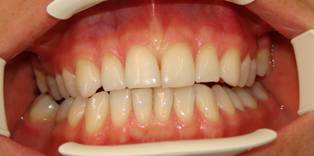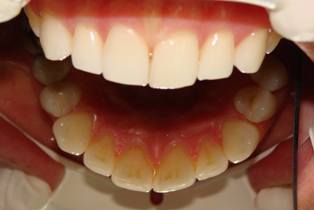PREVENTIVE CARE
Preventive care is the first step a patient should do to maintain healthy teeth.
Oral hygiene needs to be introduced as early as in childhood, when the first milk teeth begin to emerge. Proper tooth care helps achieve best results in the form of healthy, strong teeth and a beautiful, full smile.
Preventive care is a simple method accessible to everyone. The sooner you start, the better results you will achieve - healthy teeth and gums. It is difficult though. It is not possible to buy good hygiene, do hygienic procedures in advance or catch up after years of bad oral practices.
The main idea of prophylaxis is to fight plaque - the primary cause of the development of caries and periodontitis. On the other hand, preventive care aims to increase the immunity of teeth and periodontal tissue to bacteria and their toxic products.
Our office provides patients with a full range of professionally conducted preventive treatments using modern and proven methods.
Oral hygiene
When asked, more than 80% of patients would say that they have good oral hygiene.


An example of good hygiene. Two years have passed since the last hygienic procedure. A small amount of plaque is visible on the palatal surfaces.
If you ask doctors’ opinion on their patients’ oral care, they would say that only about 20% of the patients have satisfactory hygiene. Why such a difference? Many patients choose to spend money to buy an electric toothbrush or irrigator. Still they have difficulties with maintaining everyday oral care regime. It is very common that patients say: “I do what I can. I’ve already bought an electric brush, expensive irrigator and I really try. But maybe I use the wrong toothpaste? What should I buy, doctor?”
Spending money on special equipment or toothpaste is the easiest solution, but does not guarantee good results. Only regular and proper oral care gives you beneficial results. The most important is daily regime.
The hygiene instruction contains detailed tips on oral care. After examining the patient, the doctor recommends proper brushing technique, depending on the needs of the patient, the state of their teeth and periodontium, and his manual skills.
In case of orthodontic patients or patients having prostheses, doctor takes into account their problems of cleaning smooth tooth surface, the spaces between teeth and difficult to reach places, and recommends the right type of toothbrush and toothpaste and additional oral care devices. The presentation of oral care tools is often accompanied by demonstration of their use on models or on the patient.
Professional teeth cleaning
Professional teeth cleaning aims at removing biofilm (plaque) and other deposits accumulated on teeth surface, which cannot be removed using home methods. Depending on the type of deposits, different methods are used:
- Mechanical teeth cleaning using special brushes, rubbers and paste.
- Sandblasting – treatment focused on removing plaque caused by coffee, tea or tobacco. Here we use air-abrasion device so called sandblaster. Such a device ejects a thin stream of a mixture of dust and high pressure water, effectively eliminating deposits and discolouration which cannot be removed with a toothbrush. Sandblasting cannot be repeated too often. With proper oral hygiene a treatment once or twice a year is more than enough.
- Scaling is a procedure aimed at removing hard deposits (tartar) accumulated on the surface of crowns using ultrasonic equipment known as scalers. We remove supragingival calculus, and also not easily visible tartar deposited in the pockets and gingival crevices and, also, subgingival tartar. This is often a surprise for patients. They cannot see it, however it is there and its consequences are worse than in the case of supragingival one. Scaling is usually painless, but some patients may experience pain - in this case local anesthetic is given. The next step after scaling is polishing of the entire cleaned tooth surface. This prevents any future plague build-up and ensures a pleasant feeling of smooth teeth.
Dietary guidelines
Diet can positively and significantly affect the condition of your teeth and periodontium. Firstly, diet of a pregnant patient or proper nutrition of infants and young children affect healthy development of teeth and periodontal tissues. Such a diet should be rich in minerals such as calcium and phosphorus and vitamins (such as A, E, C, B, D). On the other hand, with food we eat we also supply food (carbohydrates) to the bacteria dwelling in the mouth. The influence of carbohydrates on caries formation is widely known.
Talking into consideration our patients’ health, and being aware of the role of diet in oral preventive care we provide our patients with a full range of information on healthy diet.
Sealing fissures
Sealing fissures involves filling pits and fissures in teeth with special material – sealant.
Pits and crevices cause food particles to get stuck in between, thus boosting development of pathological bacterial flora. Complex shapes hinder or even prevent proper cleaning with a toothbrush, which leads to development of caries.
Sealing of both milk and permanent teeth aims at protecting them against tooth decay. Sealing treatment should be done as soon as the tooth emerges and when it can be isolated from the saliva.
Sealing is mostly done on healthy, permanent molars, premolars, and milk molars. It is also possible to seal cavities in the palatal surface of permanent incisors and canines. This is a perfect method to prevent tooth decay, simple, painless and effective – it helps achieve approx. 90% of reduction of caries.
Individual fluoridation - teeth sealing
Fluoride is a very important factor in the field of dental disease preventive care.
The most popular form of professional fluoride prophylaxis is sealing cleaned teeth using fluoride varnish such as Fluor Protector or, recommended especially for children, Duraphat. Teeth varnishing is widely used both in overall oral health care and in specific problem areas. Dental varnish exhibits high viscosity therefore it easily sticks to tooth enamel and remains longer on the surface thereby slowly releasing fluoride. Thanks to the above characteristics these preparations guarantee dental caries reduction to 40%.
Teeth varnishing, depending on needs, can be repeated 2-3 times a year depending on the patient's teeth tendency for decay. Fluoride in a form of fluoride varnish: standard procedure includes contact teeth varnishing and is performed after scaling, sandblasting and teeth polishing.
The impact of fluoride is quite broad. It:
- strengthens tooth enamel
- triggers remineralization process which repairs the damaged enamel
- reduces plaque build-up
- prevents the formation of secondary caries (on the border of filling and the tooth)
- reduces the risk of caries during the treatment with dental braces
- soothes cervical tooth sensitivity.

